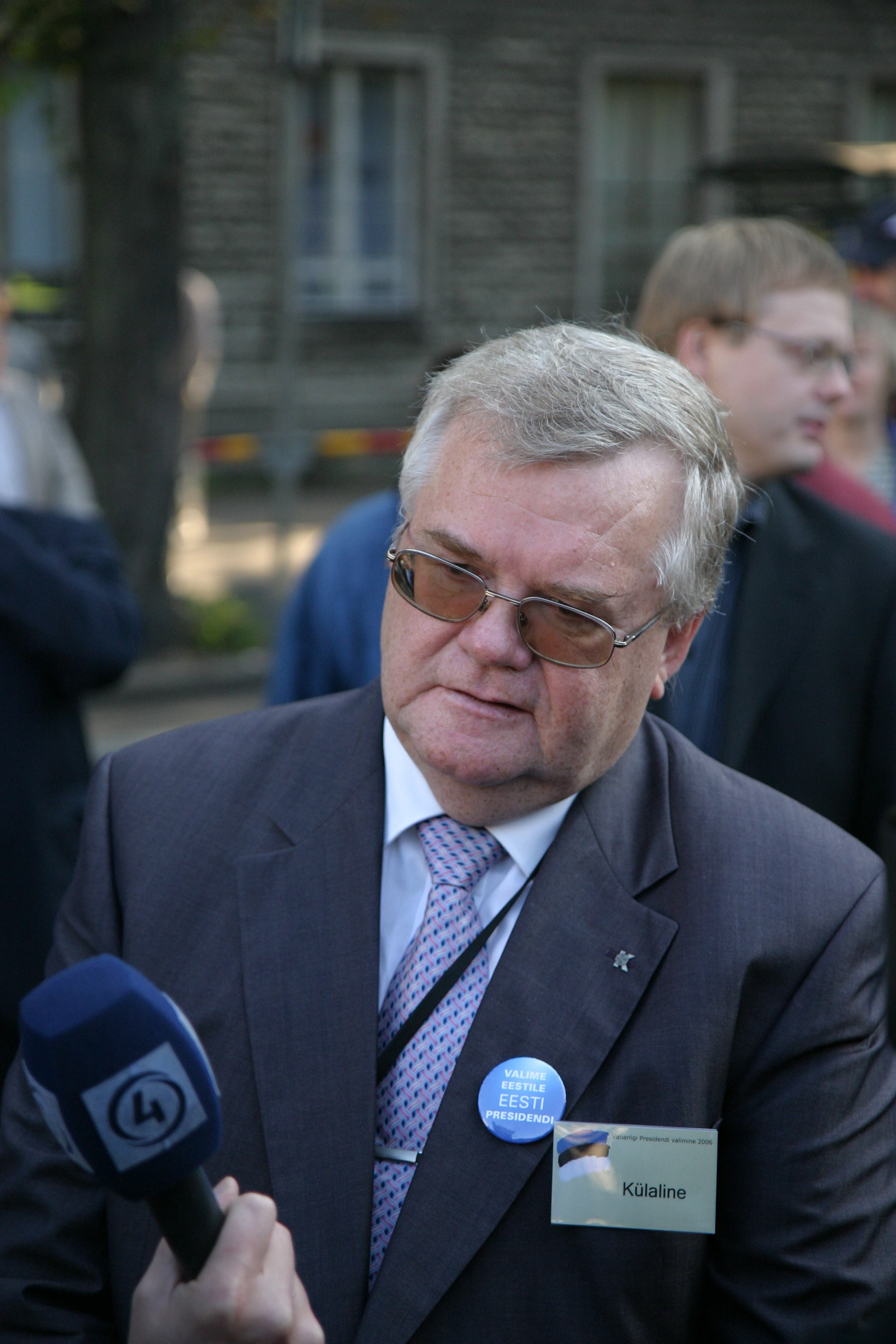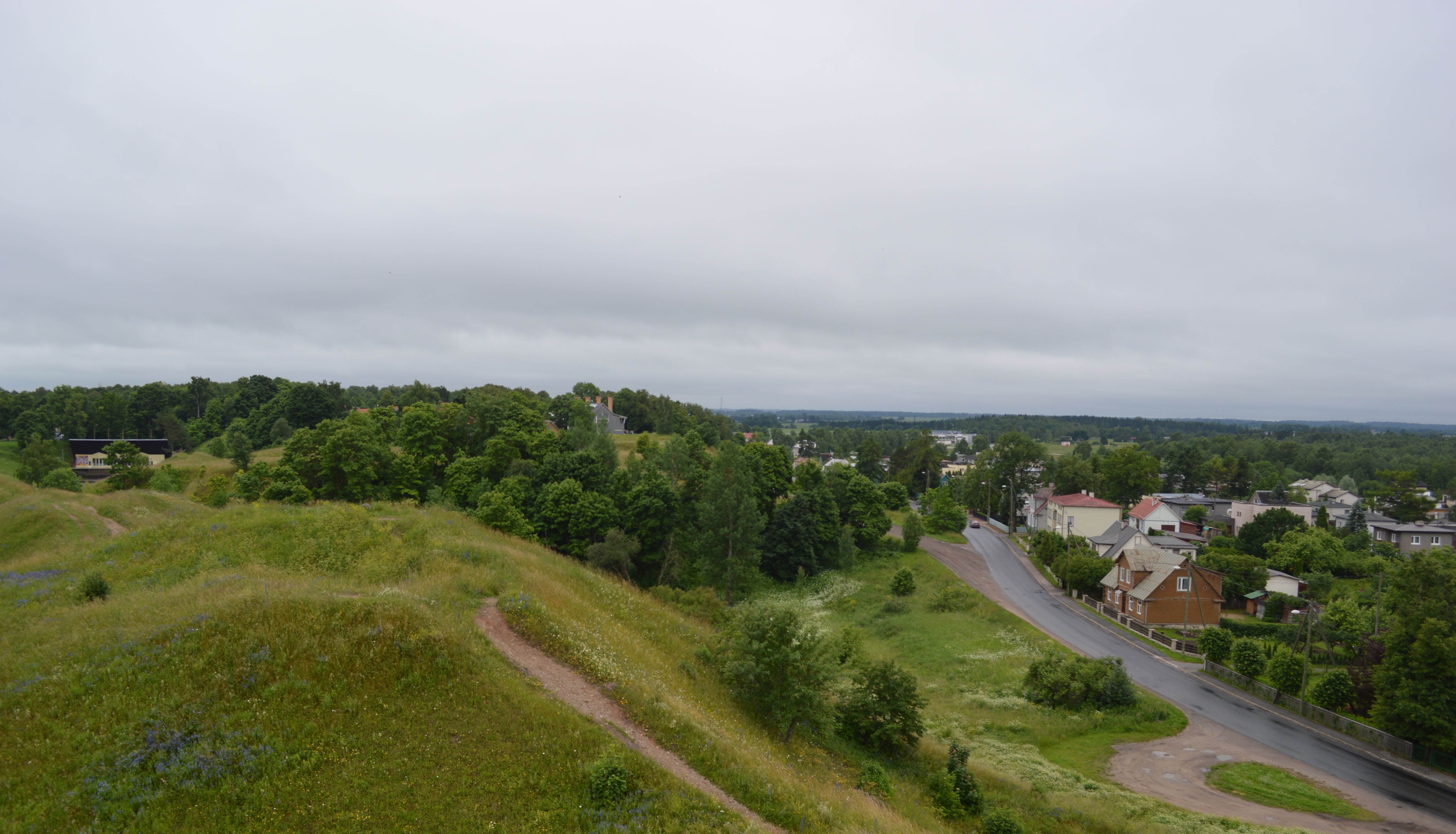|
Erast Hiatsintov
Erast Georgievich Hiatsintov (Russian: Эра́ст Гео́ргиевич Гиаци́нтов; 10 November 1858 – 7 April 1910) was a Russian Empire politician who was the mayor of Reval (now Tallinn) in from February 1905 to December of that year, notably becoming the first person of Russian descent to become the mayor of Reval. Consequently, he was also the first person of non-Baltic German descent to become mayor, the culmination of an Estonian-Russian political alliance, created by future Estonian president Konstantin Päts and Jaan Poska that broke the power that Baltic Germans had in the political system of the city for centuries. Biography Born in Moscow to a noble family from Ryazan, Hiatsintov graduated with a degree in law from Moscow State University. After he graduated, he worked in Moscow courts. He then worked in Łomża, where in 1885, he was appointed as the Chief Complaint Officer and took up the position of Chancellor of the Office of Łomża. In 1889, he mo ... [...More Info...] [...Related Items...] OR: [Wikipedia] [Google] [Baidu] |
List Of Mayors Of Tallinn
The following is a list of Mayors of Tallinn (before 1918 ), Estonia. See also * Timeline of Tallinn External links Mayors of Tallinn {{DEFAULTSORT:List Of Mayors Of Tallinn Mayors of Tallinn, List of mayors of Tallinn Lists of mayors of places in Estonia, Tallinn Tallinn-related lists, Mayors et:Tallinna linnapea#Linnapeade loend ... [...More Info...] [...Related Items...] OR: [Wikipedia] [Google] [Baidu] |
Łomża
Łomża (), in English known as Lomza, is a city in north-eastern Poland, approximately 150 kilometers (90 miles) to the north-east of Warsaw and west of Białystok. It is situated alongside the Narew river as part of the Podlaskie Voivodeship since 1999. Previously, it was the capital of the Łomża Voivodeship from 1975 to 1998. It is the capital of Łomża County and has been the seat of the Roman Catholic Diocese of Łomża since 1925. Łomża is one of the principal economic, educational, and cultural centres of north-eastern Masovia as well as one of the three main cities of Podlaskie Voivodeship (beside Białystok and Suwałki). It lends its name to the protected area of Łomża Landscape Park. The town is also the location of the Łomża Brewery. History Łomża was founded in the 10th century, on the site of the present day village called Stara Łomża (''Old Łomża''). It was first mentioned in official records in the 14th century. Łomża received its municipal r ... [...More Info...] [...Related Items...] OR: [Wikipedia] [Google] [Baidu] |
Politicians From The Russian Empire
A politician is a person active in party politics, or a person holding or seeking an elected office in government. Politicians propose, support, reject and create laws that govern the land and by an extension of its people. Broadly speaking, a politician can be anyone who seeks to achieve political power in a government. Identity Politicians are people who are politically active, especially in party politics. Political positions range from local governments to state governments to federal governments to international governments. All ''government leaders'' are considered politicians. Media and rhetoric Politicians are known for their rhetoric, as in speeches or campaign advertisements. They are especially known for using common themes that allow them to develop their political positions in terms familiar to the voters. Politicians of necessity become expert users of the media. Politicians in the 19th century made heavy use of newspapers, magazines, and pamphlets, as well ... [...More Info...] [...Related Items...] OR: [Wikipedia] [Google] [Baidu] |
People From Moskovsky Uyezd
A person ( : people) is a being that has certain capacities or attributes such as reason, morality, consciousness or self-consciousness, and being a part of a culturally established form of social relations such as kinship, ownership of property, or legal responsibility. The defining features of personhood and, consequently, what makes a person count as a person, differ widely among cultures and contexts. In addition to the question of personhood, of what makes a being count as a person to begin with, there are further questions about personal identity and self: both about what makes any particular person that particular person instead of another, and about what makes a person at one time the same person as they were or will be at another time despite any intervening changes. The plural form "people" is often used to refer to an entire nation or ethnic group (as in "a people"), and this was the original meaning of the word; it subsequently acquired its use as a plural form of per ... [...More Info...] [...Related Items...] OR: [Wikipedia] [Google] [Baidu] |
Politicians From Moscow
A politician is a person active in party politics, or a person holding or seeking an elected office in government. Politicians propose, support, reject and create laws that govern the land and by an extension of its people. Broadly speaking, a politician can be anyone who seeks to achieve political power in a government. Identity Politicians are people who are politically active, especially in party politics. Political positions range from local governments to state governments to federal governments to international governments. All ''government leaders'' are considered politicians. Media and rhetoric Politicians are known for their rhetoric, as in speeches or campaign advertisements. They are especially known for using common themes that allow them to develop their political positions in terms familiar to the voters. Politicians of necessity become expert users of the media. Politicians in the 19th century made heavy use of newspapers, magazines, and pamphlets, as well a ... [...More Info...] [...Related Items...] OR: [Wikipedia] [Google] [Baidu] |
1910 Deaths
Year 191 ( CXCI) was a common year starting on Friday (link will display the full calendar) of the Julian calendar. At the time, it was known as the Year of the Consulship of Apronianus and Bradua (or, less frequently, year 944 ''Ab urbe condita''). The denomination 191 for this year has been used since the early medieval period, when the Anno Domini calendar era became the prevalent method in Europe for naming years. Events By place Parthia * King Vologases IV of Parthia dies after a 44-year reign, and is succeeded by his son Vologases V. China * A coalition of Chinese warlords from the east of Hangu Pass launches a punitive campaign against the warlord Dong Zhuo, who seized control of the central government in 189, and held the figurehead Emperor Xian Emperor Xian of Han (2 April 181 – 21 April 234), personal name Liu Xie (劉協), courtesy name Bohe, was the 14th and last emperor of the Eastern Han dynasty in China. He reigned from 28 September 189 until 1 ... [...More Info...] [...Related Items...] OR: [Wikipedia] [Google] [Baidu] |
1858 Births
Events January–March * January – **Benito Juárez (1806–1872) becomes Liberal President of Mexico. At the same time, conservatives install Félix María Zuloaga (1813–1898) as president. **William I of Prussia becomes regent for his brother, Frederick William IV, who had suffered a stroke. * January 9 ** British forces finally defeat Rajab Ali Khan of Chittagong ** Anson Jones, the last president of the Republic of Texas, commits suicide. * January 14 – Orsini affair: Felice Orsini and his accomplices fail to assassinate Napoleon III in Paris, but their bombs kill eight and wound 142 people. Because of the involvement of French émigrés living in Britain, there is a brief anti-British feeling in France, but the emperor refuses to support it. * January 25 – The ''Wedding March'' by Felix Mendelssohn becomes a popular wedding recessional, after it is played on this day at the marriage of Queen Victoria's daughter Victoria, Princess Royal, to Pri ... [...More Info...] [...Related Items...] OR: [Wikipedia] [Google] [Baidu] |
Edgar Savisaar
Edgar Savisaar (31 May 1950 – 29 December 2022) was an Estonian politician, one of the founding members of Popular Front of Estonia and the Centre Party. He served as the acting Prime Minister of Estonia, Minister of the Interior, Minister of Economic Affairs and Communications, and twice mayor of Tallinn. Early life and education Savisaar was born in the Harku Prison in 1950. His parents Elmar Savisaar (1911–1970) and Marie Savisaar née Burešin (1912–1984) were farmers from Vastse-Kuuste, Tartu County, who both had been convicted in 1949 of resisting collectivization. The events, which had culminated with physical conflict, had started when kolhoz activists came to nationalise Savisaar couple's two cows (named Marja and Oksa), a pig, a horse drawn hay rake, a spring-tooth harrow, and other farming equipment. Elmar was sentenced to 15 years and Marie to 5 years in prison. In the autumn of 1950, Marie was released from prison under an amnesty and returned to Vastse-K ... [...More Info...] [...Related Items...] OR: [Wikipedia] [Google] [Baidu] |
1905 Russian Revolution
The Russian Revolution of 1905,. also known as the First Russian Revolution,. occurred on 22 January 1905, and was a wave of mass political and social unrest that spread through vast areas of the Russian Empire. The mass unrest was directed against the Tsar, nobility, and ruling class. It included worker strikes, peasant unrest, and military mutinies. In response to the public pressure, Tsar Nicholas II enacted some constitutional reform (namely the October Manifesto). This took the form of establishing the State Duma, the multi-party system, and the Russian Constitution of 1906. Despite popular participation in the Duma, the parliament was unable to issue laws of its own, and frequently came into conflict with Nicholas. Its power was limited and Nicholas continued to hold the ruling authority. Furthermore, he could dissolve the Duma, which he often did. The 1905 revolution was primarily spurred by the international humiliation as a result of the Russian defeat in the Russo-Japa ... [...More Info...] [...Related Items...] OR: [Wikipedia] [Google] [Baidu] |
Governorate Of Estonia
The Governorate of Estonia, also known as the Governorate of Esthonia (Pre-reformed rus, Эстля́ндская губе́рнія, r=Estlyandskaya guberniya); et, Eestimaa kubermang was a governorate in the Baltic region, along with the Livonian and Courland Governorates. It is a part of the Imperial Russian administration ('' guberniya''), which is located in modern-day northern Estonia and some islands in the West Estonian archipelago, including the islands of Hiiumaa () and Vormsi (). The Governorate was established in 1796 when Paul I's reform abolished the Viceroyalty (''namestnik''). Previously, the Reval Governorate existed under Peter I's reign from the Treaty of Nystad, which ceded territory from Sweden to the newly established Russian Empire, until its inexistence in 1783. From the 1850s until 1914, the Estonian national awakening was influenced and characterized the governorate by general modernization, the reorganization into a modern European society, ... [...More Info...] [...Related Items...] OR: [Wikipedia] [Google] [Baidu] |
Rakvere
Rakvere is a town in northern Estonia and the administrative centre of the Lääne-Viru ''maakond'' (county), 20 km south of the Gulf of Finland of the Baltic Sea. Rakvere is the 8th most populous urban area in Estonia. Rakvere has a total area of 10.75 square kilometres, and although about 15% of it is covered by forest, the city is still populated so densely as to make it the third most densely populated city in Estonia. From the 13th century until the early 20th century, Rakvere was more widely known by its historical German name, ''Wesenberg(h)''. History The earliest signs of human settlement dating back to the 3rd–5th centuries AD have been found on the present theatre hill. Probably to protect that settlement, a wooden stronghold was built on the present-day Vallimägi. Soon after the kingdom of Denmark had conquered northern Estonia, in 1220, the new rulers started to erect stone buildings. A settlement called ''Tarvanpea'' was first mentioned in the Chronicle ... [...More Info...] [...Related Items...] OR: [Wikipedia] [Google] [Baidu] |
_1938.jpg)



